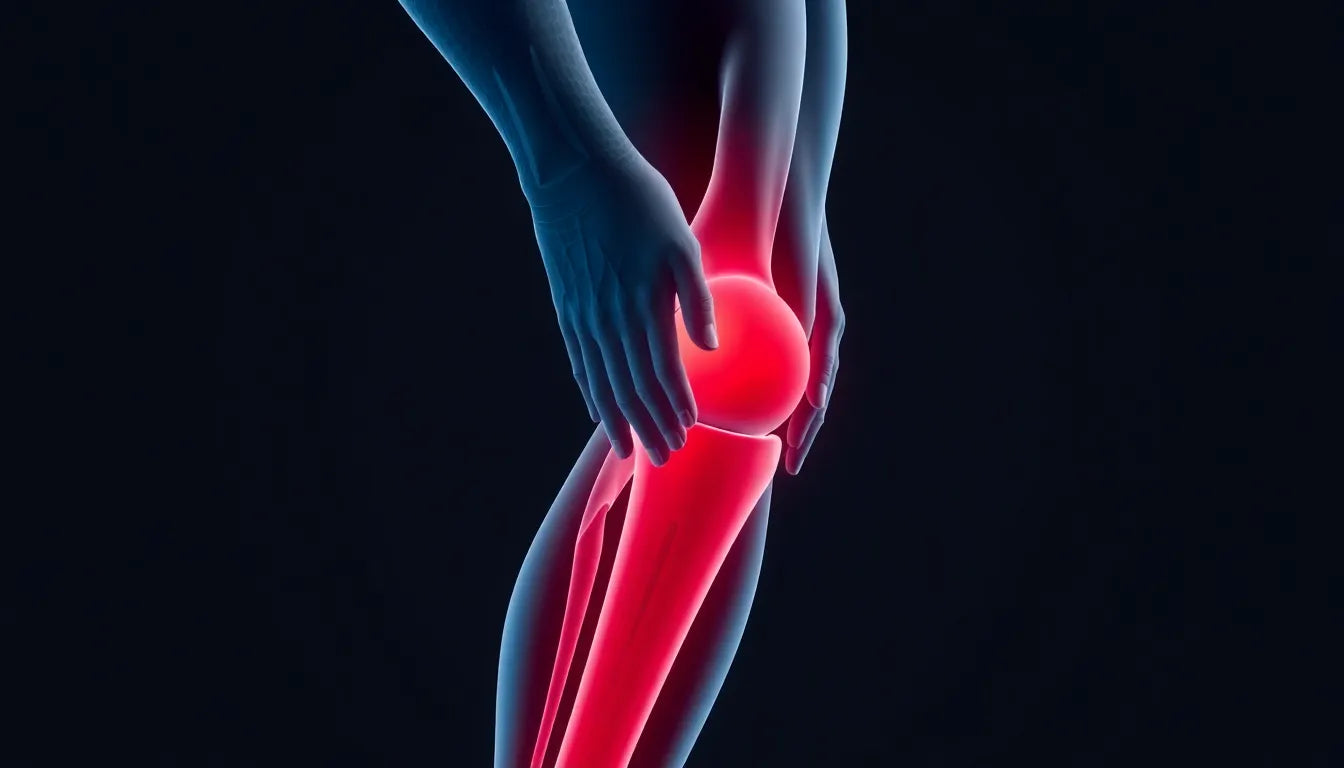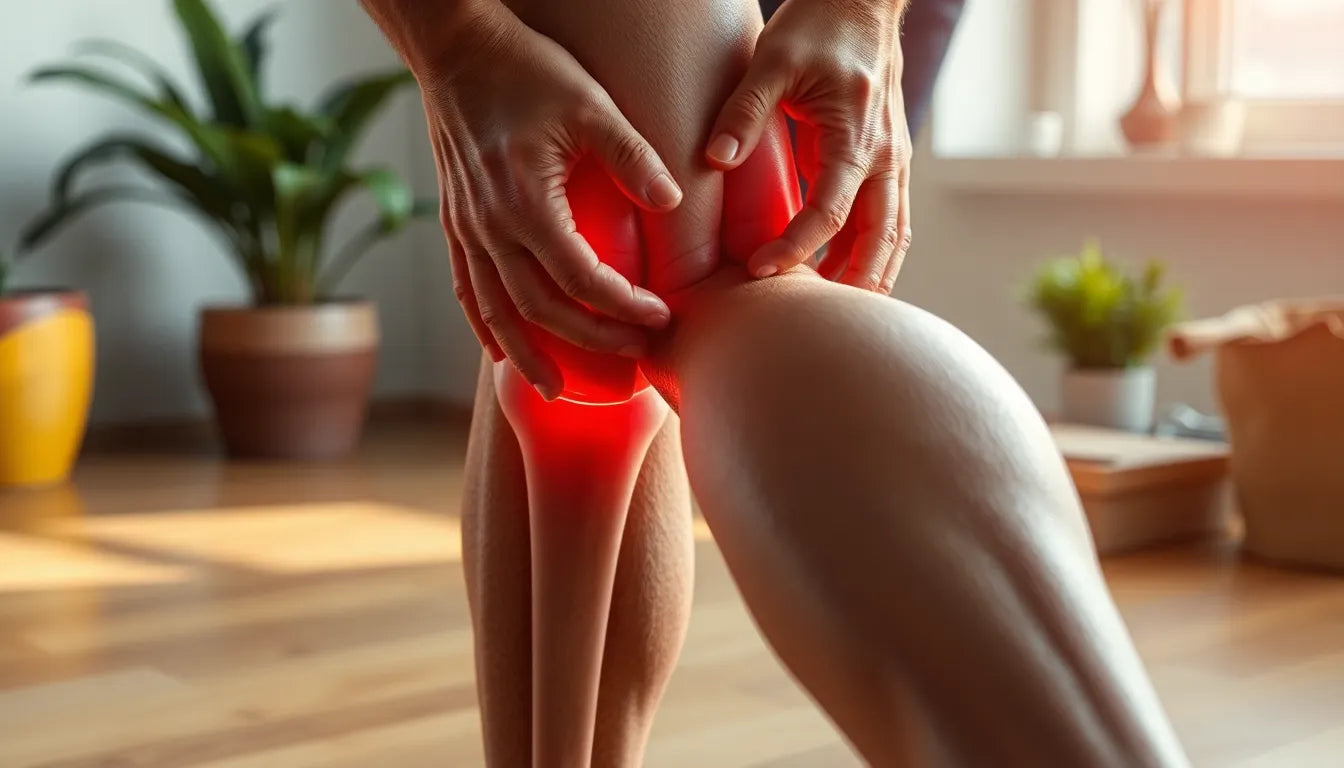Shoulder and upper arm pain, known as "smerter i skulder og overarm," is a common complaint affecting many individuals across various age groups. This type of discomfort can significantly impact one's quality of life, making even the simplest tasks, such as lifting a cup of coffee or reaching for a book on a shelf, a painful ordeal. The prevalence of this pain highlights the importance of understanding its causes and potential treatments to regain control over one's daily activities without discomfort.
Understanding the impact of shoulder and upper arm pain
The shoulder is one of the most mobile joints in the human body, which makes it susceptible to a variety of injuries and conditions. Pain in the shoulder and upper arm can stem from numerous causes, each affecting the joint's ability to function properly. Muscle tension, often resulting from overuse or poor posture, is a frequent culprit. Additionally, injuries such as rotator cuff tears or impingement syndrome can lead to significant discomfort and reduced mobility.
Beyond injuries, degenerative conditions like osteoarthritis, tendinitis, and bursitis are common among older adults, contributing to persistent pain and stiffness. These conditions can gradually wear down the joint, leading to chronic pain that interferes with everyday activities. The impact of shoulder and upper arm pain is not only physical but also psychological, as it can lead to frustration and decreased motivation when simple tasks become challenging.
Exploring treatment options
Addressing shoulder and upper arm pain involves a comprehensive understanding of its underlying causes. Treatment options range from conservative approaches to surgical interventions, depending on the severity and persistence of the pain. Conservative treatments, such as physiotherapy and exercise, are often the first line of defense, focusing on strengthening the muscles around the shoulder to improve function and reduce pain.

Men's Posture Shirt™ - Black
Patented shirt for men to improve posture, activate muscles, and relieve shoulder and upper back pain.
In some cases, surgical options may be considered, particularly when conservative methods fail to provide relief or when there is significant structural damage to the shoulder joint. Understanding these options is crucial for individuals seeking to manage their pain effectively and regain their quality of life.
By exploring the causes and treatments of shoulder and upper arm pain, individuals can take proactive steps towards managing their condition. This knowledge empowers them to make informed decisions about their health, ultimately enabling them to lead a life free from the limitations imposed by pain. In the following sections, we will delve deeper into the specific symptoms, causes, and treatment options available to those suffering from shoulder and upper arm pain, providing a comprehensive guide to regaining control over one's daily life.
Identifying the causes of shoulder and upper arm pain
Understanding the root causes of shoulder and upper arm pain is crucial for effective management and treatment. One of the most common causes is muscle tension and injuries, often resulting from overexertion, poor posture, or repetitive movements. These factors can lead to conditions such as rotator cuff injuries and impingement syndrome. The rotator cuff, a group of muscles and tendons surrounding the shoulder joint, is particularly susceptible to strain and tears due to its role in stabilizing the shoulder during movement. Impingement syndrome occurs when the shoulder blade exerts pressure on the underlying soft tissues during arm lifting, causing pain and restricted movement.
Degenerative conditions are another significant contributor to shoulder and upper arm pain, particularly among older adults. Osteoarthritis, tendinitis, and bursitis are prevalent conditions that can lead to chronic pain and stiffness. Osteoarthritis involves the gradual wear and tear of the joint cartilage, while tendinitis refers to the inflammation of the tendons. Bursitis, on the other hand, is the inflammation of the bursa, a small fluid-filled sac that reduces friction between tissues. These degenerative conditions can severely impact mobility and quality of life, necessitating timely intervention and management.
Additionally, other factors such as nerve compression and anatomical variations can also cause shoulder and upper arm pain. Nerve compression, often due to herniated discs or bone spurs, can lead to referred pain in the shoulder and upper arm. Anatomical variations, such as an abnormal acromion angle, can predispose individuals to impingement syndrome and other shoulder issues.
Recognizing symptoms of shoulder and upper arm pain
Identifying the symptoms of shoulder and upper arm pain is essential for early diagnosis and treatment. Common symptoms include pain during arm movement, night pain, and reduced mobility. Many individuals experience pain that radiates from the shoulder to the upper arm, often exacerbated by specific movements or activities. Night pain can disrupt sleep, further impacting one's overall well-being and daily functioning. Reduced mobility and stiffness in the shoulder joint can make it challenging to perform routine tasks, highlighting the need for prompt attention and care.
In some cases, individuals may notice swelling, tenderness, or a clicking sensation in the shoulder joint. These symptoms can indicate underlying issues such as inflammation or structural damage, requiring professional evaluation and intervention.
Exploring treatment options for shoulder and upper arm pain
Effective management of shoulder and upper arm pain involves a combination of conservative treatments and, in some cases, surgical interventions. Conservative treatments are typically the first line of defense and include physiotherapy, exercise, and load management. Physiotherapy focuses on strengthening the muscles around the shoulder joint, improving flexibility, and reducing pain. A professional evaluation can help create a tailored exercise program to address individual needs and promote recovery.

Women's Posture Shirt™ - Black
Posture Shirt™ with Neuroband™ technology for women to improve alignment, relieve tension, and support muscles.
Osteopathy is another conservative approach that emphasizes holistic care and manual therapy techniques to relieve pain and improve joint function. Osteopaths work to restore balance and alignment within the body, addressing both the symptoms and underlying causes of pain.
Pain relief methods such as ice application, rest, and medications can also be beneficial, particularly in managing inflammation and acute pain episodes. In some cases, cortisone injections may be recommended to reduce inflammation and provide temporary relief.
For individuals with severe or persistent pain, surgical interventions may be considered. Surgery is typically reserved for cases where conservative treatments have failed, or when significant structural damage, such as a large rotator cuff tear, is present. Surgical options aim to repair damaged tissues, restore joint function, and alleviate pain, enabling individuals to regain their quality of life.
By understanding the causes, symptoms, and treatment options for shoulder and upper arm pain, individuals can take proactive steps towards managing their condition. This knowledge empowers them to make informed decisions about their health, ultimately enabling them to lead a life free from the limitations imposed by pain. In the next section, we will explore prevention strategies and self-care tips to maintain shoulder health and prevent future pain episodes.
Prevention and self-care strategies for shoulder and upper arm pain
Preventing shoulder and upper arm pain, or "smerter i skulder og overarm," involves adopting proactive self-care strategies and lifestyle adjustments. By focusing on strengthening exercises and maintaining proper ergonomics, individuals can significantly reduce the risk of developing pain and discomfort in these areas.
Exercise and strengthening
Engaging in regular exercise is crucial for maintaining strong and flexible shoulder muscles, which can help prevent injuries and pain. Incorporating a variety of exercises that target the shoulder and upper arm muscles ensures balanced muscle development and enhances joint stability. Simple exercises such as shoulder rotations, arm circles, and resistance band workouts can be performed at home to enhance strength and flexibility. It's important to perform these exercises with proper form to avoid strain and injury.
Ergonomics and lifestyle adjustments
Maintaining good posture and ergonomics in daily activities is essential for preventing shoulder and upper arm pain. Poor posture, particularly during prolonged sitting or computer use, can lead to muscle tension and discomfort. Ensuring that workstations are ergonomically designed, with the monitor at eye level and the chair providing adequate support, can help alleviate strain on the shoulders and upper arms.
Additionally, incorporating ergonomic aids such as adjustable chairs, keyboard trays, and supportive cushions can further reduce the risk of pain. It's also beneficial to take regular breaks to stretch and move around, preventing stiffness and promoting circulation.
Frequently Asked Questions
What are the first steps if I experience shoulder and upper arm pain?
If you experience shoulder and upper arm pain, start with initial self-care measures such as rest, ice application, and over-the-counter pain medications to reduce inflammation and discomfort. If the pain persists or worsens, seek professional help from a healthcare provider for a thorough evaluation and personalized treatment plan.
How can I differentiate between muscle tension and a more serious condition?
Muscle tension typically presents as a dull, aching pain that may improve with rest and gentle stretching. In contrast, a more serious condition may involve sharp pain, swelling, or a significant decrease in mobility. If you experience any of these symptoms, or if the pain does not improve with self-care, consult a healthcare professional for a proper diagnosis.
Are there specific exercises I can do at home to alleviate pain?
Yes, there are several exercises that can help alleviate shoulder and upper arm pain. Gentle stretching exercises, such as shoulder rolls and arm circles, can improve flexibility and reduce tension. Strengthening exercises using resistance bands can also enhance shoulder stability and support recovery. It's advisable to consult with a physiotherapist to ensure exercises are performed correctly and safely.
When should I consider surgical options?
Surgical options should be considered when conservative treatments have failed to provide relief or when there is significant structural damage, such as a large rotator cuff tear. A healthcare professional can help determine the appropriate time for surgery based on the severity of your condition and your overall health.
Can ergonomic products really make a difference?
Yes, ergonomic products can significantly complement treatment and aid recovery by reducing strain on the shoulders and upper arms. Products like ergonomic chairs, adjustable desks, and supportive cushions help maintain proper posture and minimize stress on the musculoskeletal system during daily activities.
By adopting these prevention and self-care strategies, individuals can take control of their shoulder and upper arm health, reducing the risk of pain and enhancing their overall well-being. Empowered with knowledge and practical tips, you can lead a life free from the limitations imposed by pain.
Kilder
- Aker Kiropraktikk. "Skuldersmerter."
- Klinikk for Alle. "Betennelse i Skulderen."
- Aleris. "Skuldersmerter: Årsaker."
- Aros Kiropraktor. "Smerter i Skulder."
- Apexklinikken. "Skuldersmerter."
- Norklinikken. "Skulderplager: Vanlige Årsaker og Hva som kan Gjøres."
- Klinikk for Alle. "Skuldersmerter."
- Årstadklinikken. "Skuldersmerter."


















